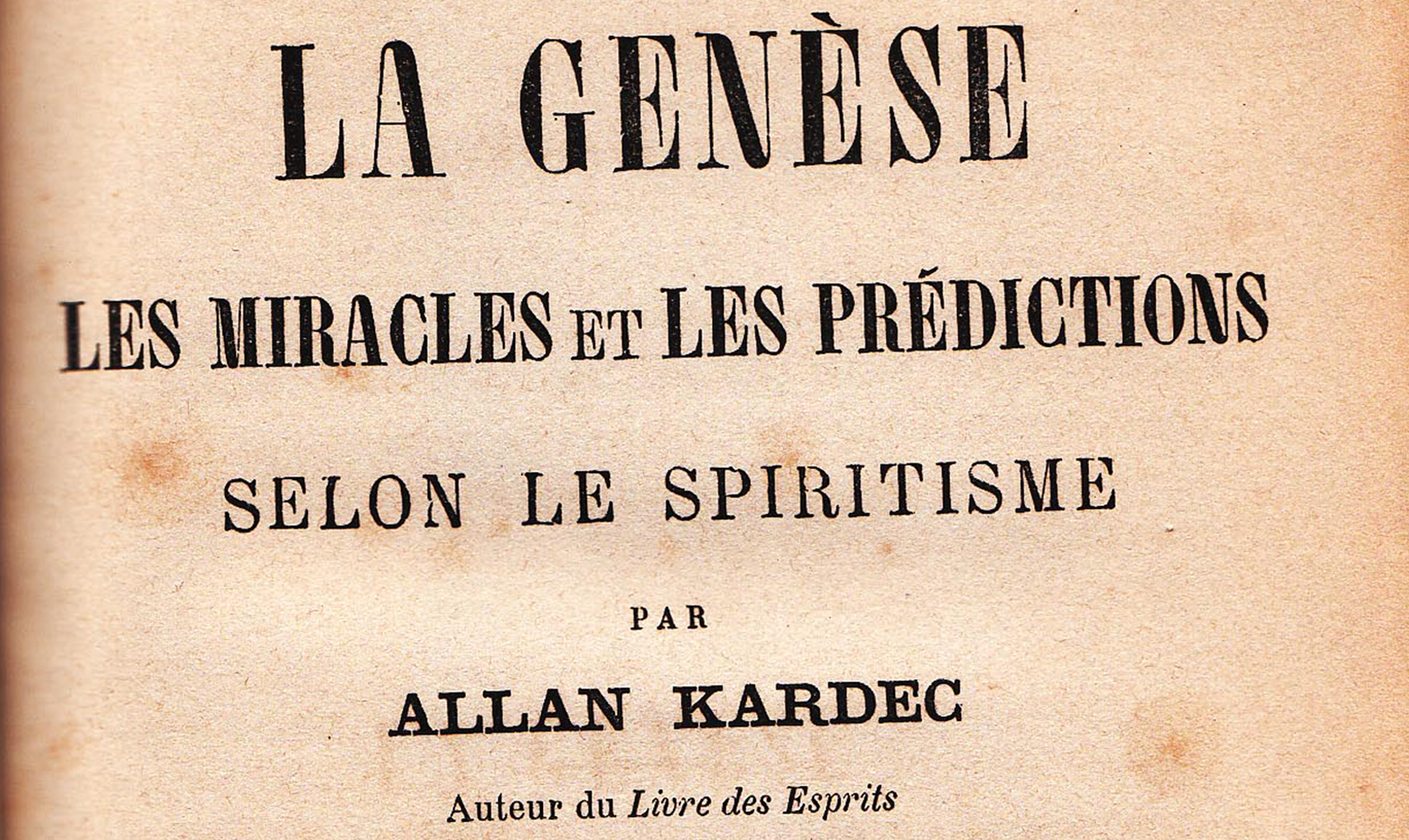The last volume of the Spiritist Codification, published in January 1868, the book “The genesis: the miracles and predictions according to Spiritism“, as the title indicates, addresses three different themes, namely: “The Genesis of the Universe, of our orb and of the human being, the nature of Miracles and finally, the phenomenon of Predictions, all analyzed according to Spiritism and grouped in a volume, which, over the years, became better known as “The Genesis”.
The other works of the Codification were organized and commented on by Allan Kardec, but we can say that “The Genesis”, with the exception of Chapter VI – General Astronomy, is his authorship.
The book initially addresses the question, at the time delicate, given the reaction of sectors refractory to the nascent doctrine, of the character and validity of spiritist revelation. Instead of dealing with the subject in a preface, Allan Kardec chose to promote it deservedly as the theme of the first chapter, “Fundamentals of Spiritist Revelation”, granting the subject the status of obligatory reading, given its importance for clarifying the foundations of the doctrine.
Through twelve questions that are proposed and then answered with clarity, smoothness, and irrefutable logic, an end is placed on this question, until then controversial, of the origin, nature, and validity of the Doctrine of the Spirits.
Genesis itself is approached from Chapter II, and, shall we say, it starts from the beginning, studying God, the sovereign power of the Universe and the primary cause of everything and everyone, in terms of his existence and attributes, putting into question evidence a quality of His that is very dear to all of us, that “God is sovereignly Just and Good”. In the items that follow, the possible mechanisms of his providence are discussed, culminating with the analysis of the always fascinating possibility (or not) of being able to “see” him.
And Genesis continues in Chapter III with the question of good and evil, referring us to the philosophical domains of ethics in the analysis of its cause and manifestation, as well as in its differentiation from intelligence and instinct, and closes the chapter by addressing the fact always intriguing, recognizing the infinite justice and goodness of the Creator highlighted in Chapter II, of the destruction of living beings by each other.
In Chapter IV, Kardec gives fair relevance to the contribution of Science to the progress of Humanity and continues in Chapter V, “Ancient and Modern Systems of the World”, analyzing the evolution of our worldview, from the ancient belief of a flat Earth to the present day multiverse.
In the portentous Chapter VI, where the medium Camille Flammarion is mentioned as being the recipient of communications from the Spirit called Galileo, he entertains us with beautiful considerations about the Universe, space and time, the unity of the principle allied to the infinite diversity of manifestations, all concepts that remain more than current today.
In Chapter VII, “Geological Sketch of the Earth”, he makes a detailed study of the formation and evolution of our planet, continuing in the next two chapters with “Theories Concerning the Formation of the World” and the “Revolutions of the Globe”.
And entering the beautiful Chapter X, it addresses the ultimate question of the emergence and evolution of life, introducing the concept, now enshrined, of the vital principle, and also addressing throughout the text the scientific quarrel, at the time beyond controversial, of biogenesis (the consecrated theory that advocates that every living being comes from another living being) as opposed to spontaneous generation (the theory – now completely outdated – that proposed that living beings could “emerge” from inorganic matter), an imbroglio that was only closed after its decease, and which led him, very wisely, to ask posterity to give the last word on the subject.
Allan Kardec closes this Chapter by establishing a very important link between the physical sciences and the Spiritist Doctrine, stating: “Given the point where we find ourselves in relation to Genesis, materialism stops, while Spiritism continues its research in the field of spiritual Genesis.”
And so, we are introduced to Chapter XI, revealing to our enraptured eyes the genesis of the Spirit, only possible through the revelations of the Spiritist Doctrine, expanding human knowledge beyond the domains of dense matter, through the contribution of Humanity in erraticity, dealing with matters of great importance to all of us, such as the nature of the spiritual principle and the process of reincarnation, among others.
And “The Genesis” ends in Chapter XII, “Mosaic Genesis”, comparing the biblical text with scientific theories, and analyzing the episodes narrated in the myth of Adam and Eve, with conclusions that constitute true jewels of the human intellect. In the end, he justly worships Spiritism “as the light through which man knows from now on where he comes from, where he is going and why he is on Earth and why he suffers”.
In Chapter XIII he analyzes the nature of Miracles, followed by the very important Chapter XIV, “The Fluids”, studying their nature, application and manifestation, scientifically basing the mediumistic phenomena, and then, in the following chapter, and in the light of this knowledge, analyze the “miracles” practiced by Jesus.
From Chapter XVI onwards, the instigating question of the ability to predict, to anticipate what we call the future, is addressed, that is, the question of prescience, in order to, in the same way as in the booklet of miracles, also analyze in the chapter that follows. follows and in the light of the theoretical framework presented, the predictions of Jesus.
And, conveniently in the last chapter of the book, “The Times Are Here”, a study is made of the relevant issue of planetary transition, a topic of unique relevance, discussing the need for a renewal of Humanity, replacing the still recalcitrant spirits in evil for others who will contribute, together with those who remain, to the elevation of our planet from a world of trials and atonements to a regenerated orb, a process that is in full swing.
In 1995 I was invited by our dear and late Altivo Carissimi Pamphiro, then President of the Leon Denis Spiritist Center, in Rio de Janeiro, to review the scientific themes of “Genesis”, which after 137 years were somewhat outdated. The work was then carried out through footnotes and, where appropriate, with the insertion of images, tables and graphs, reinvigorating “The Genesis” for the delight of 21st Century readers. The revised book was published by Editora CELD in 2003 and is now in its third edition.²
Thus, I end this “bird’s flight” through Genesis, where I sketched some aspects of this beautiful work, worthy of the spiritual greatness of its author, saying: I read it, I reviewed it and… I recommend it.
Good reading!
A fraternal hug to all,
Claudio Lirange Zanatta³
Join the Guardians of Humanity Program
¹ Credit: Originally published in the Revista Cultura Espírita, from the Instituto de Cultura Espírita do Brasil-ICEB, p. 12-13, January/2012 edition.
² KARDEC, Allan. The genesis: miracles and predictions according to Spiritism. Translation by Albertina Escudeiro Sêco; technical review, update of technical-scientific terms and expansion with illustrations: Cláudio Lirange Zanatta. Rio de Janeiro: CELD, 2005.
³ Cláudio Lirange Zanatta is a Pilot, Engineer, Spiritist Exhibitor and Reviewer of the work The Genesis






